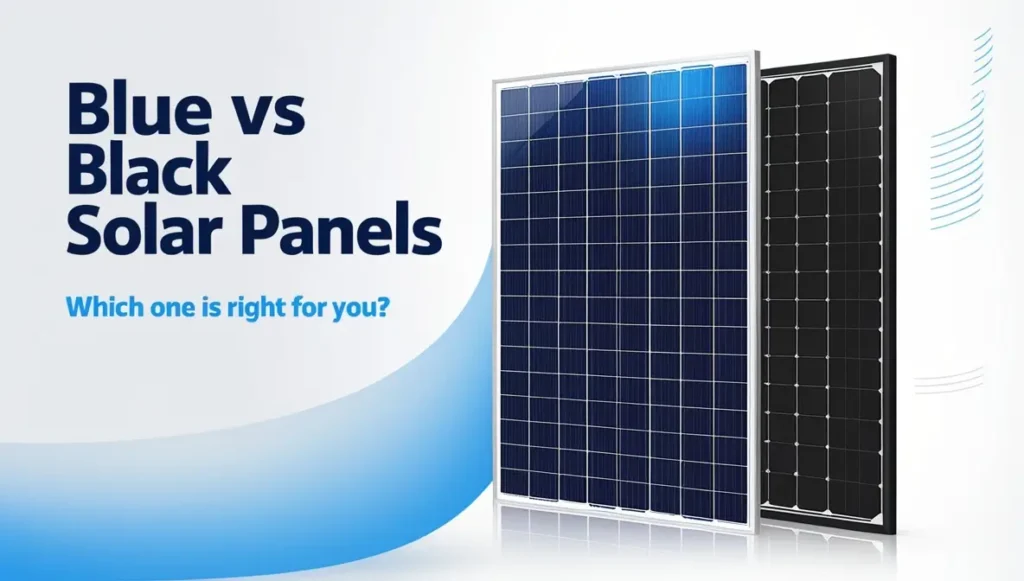When considering solar panels for your home or business, one of the key decisions you’ll need to make is choosing between blue solar panels and black solar panels. Both have distinct features, and knowing the difference can help you make an informed decision that fits your energy needs and aesthetic preferences. In this guide, we will break down the differences, pros, and cons of both types, so you can choose the best option for your solar setup.
What Are Blue and Black Solar Panels?
- Blue solar panels are also known as polycrystalline panels. They are made from silicon crystals that are melted together, giving the panels a blueish tint.
- Black solar panels, or monocrystalline panels, are made from a single crystal structure, which gives them a sleek, black appearance.
Now that we know what they are, let’s dive deeper into their differences.
Key Differences Between Blue and Black Solar Panels
- Appearance:
- Blue solar panels have a blue, shiny appearance due to their light reflection, often framed in silver or white. Their look is a bit more noticeable, which might not blend as seamlessly with darker roofs.
- Black solar panels offer a more uniform, dark look, making them aesthetically pleasing, especially on dark-colored roofs. Their matte finish absorbs more light, reducing glare.
- Efficiency:
- Black solar panels (monocrystalline) are generally more efficient, converting a higher percentage of sunlight into electricity. This makes them ideal for homes with limited roof space, as you can generate more power with fewer panels.
- Blue solar panels (polycrystalline) tend to have slightly lower efficiency, but they are still effective in areas with plenty of sunlight and ample roof space.
- Cost:
- Blue solar panels are typically more affordable because of their simpler manufacturing process. If you’re looking for a cost-effective solution and have sufficient space for extra panels, these might be the better choice.
- Black solar panels are more expensive, but their higher efficiency might offset the initial cost if you have limited space or high energy needs.
- Lifespan and Durability:
- Both blue and black solar panels have similar lifespans, often ranging between 25-30 years, with warranties to match. However, black solar panels might slightly edge out in terms of longevity due to their more refined construction.
- Temperature Sensitivity:
- Black panels tend to perform slightly better in high-temperature environments because they are more efficient at absorbing sunlight. However, heat can reduce their efficiency over time. Blue panels, on the other hand, tend to handle high temperatures better, although they are generally less efficient overall.
Which Solar Panels Are Right for You?
- If cost is your main concern, and you have plenty of space, blue polycrystalline solar panels may be the better option.
- If you’re focused on aesthetics and efficiency, particularly if you have a small roof space, then black monocrystalline solar panels will likely be worth the investment.
Environmental Impact
Both types of panels are environmentally friendly, but due to the manufacturing process, black monocrystalline panels generally produce less waste. If you’re aiming for a more eco-friendly choice, black panels are slightly better in terms of production efficiency.
Final Thoughts
The choice between blue and black solar panels comes down to your specific needs and preferences. If you have a large roof and are looking for an affordable option, blue polycrystalline panels might be the right fit. On the other hand, if you prioritize efficiency, durability, and aesthetics, black monocrystalline panels are the best choice.
No matter which you choose, installing solar panels is a step in the right direction for both your wallet and the environment.
By considering factors such as efficiency, cost, and appearance, you can find the best solar solution for your energy needs.








